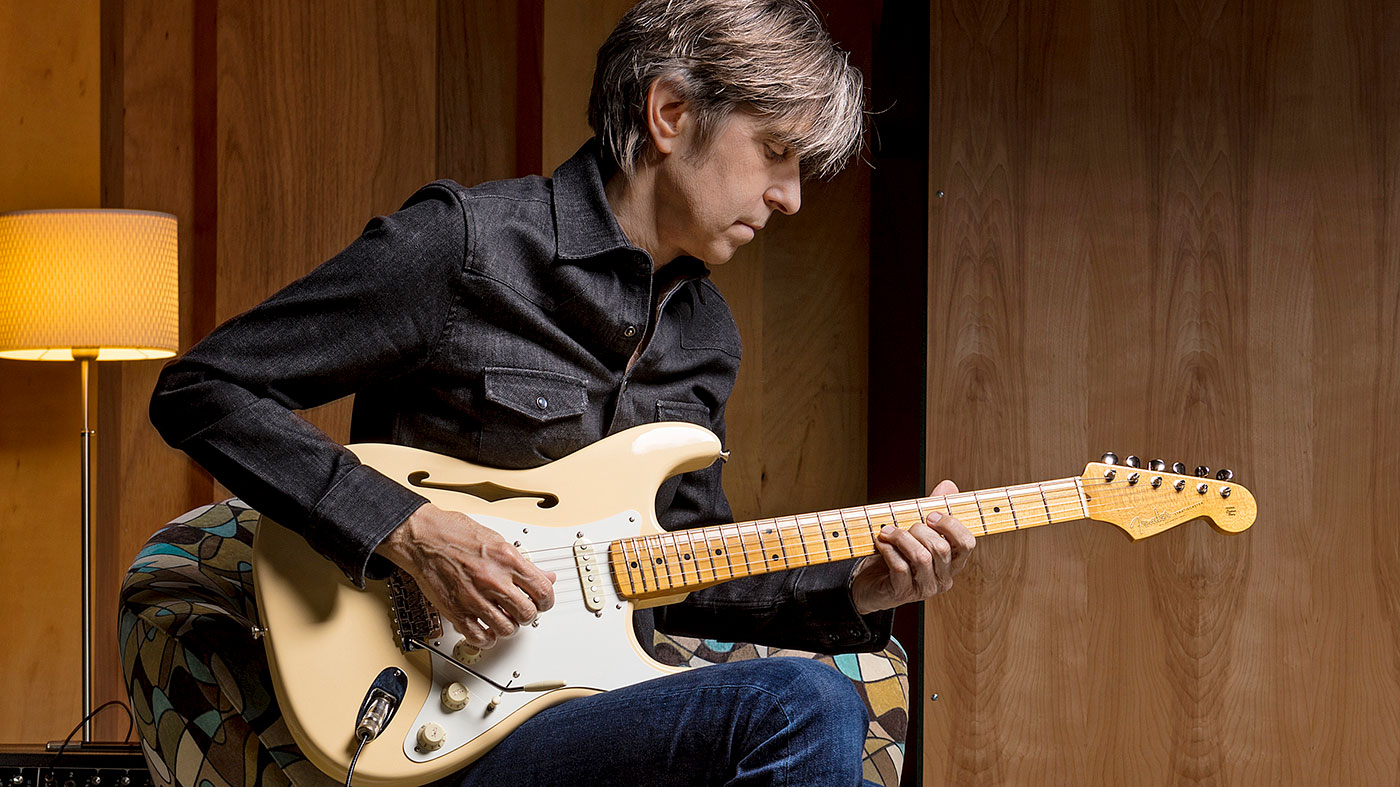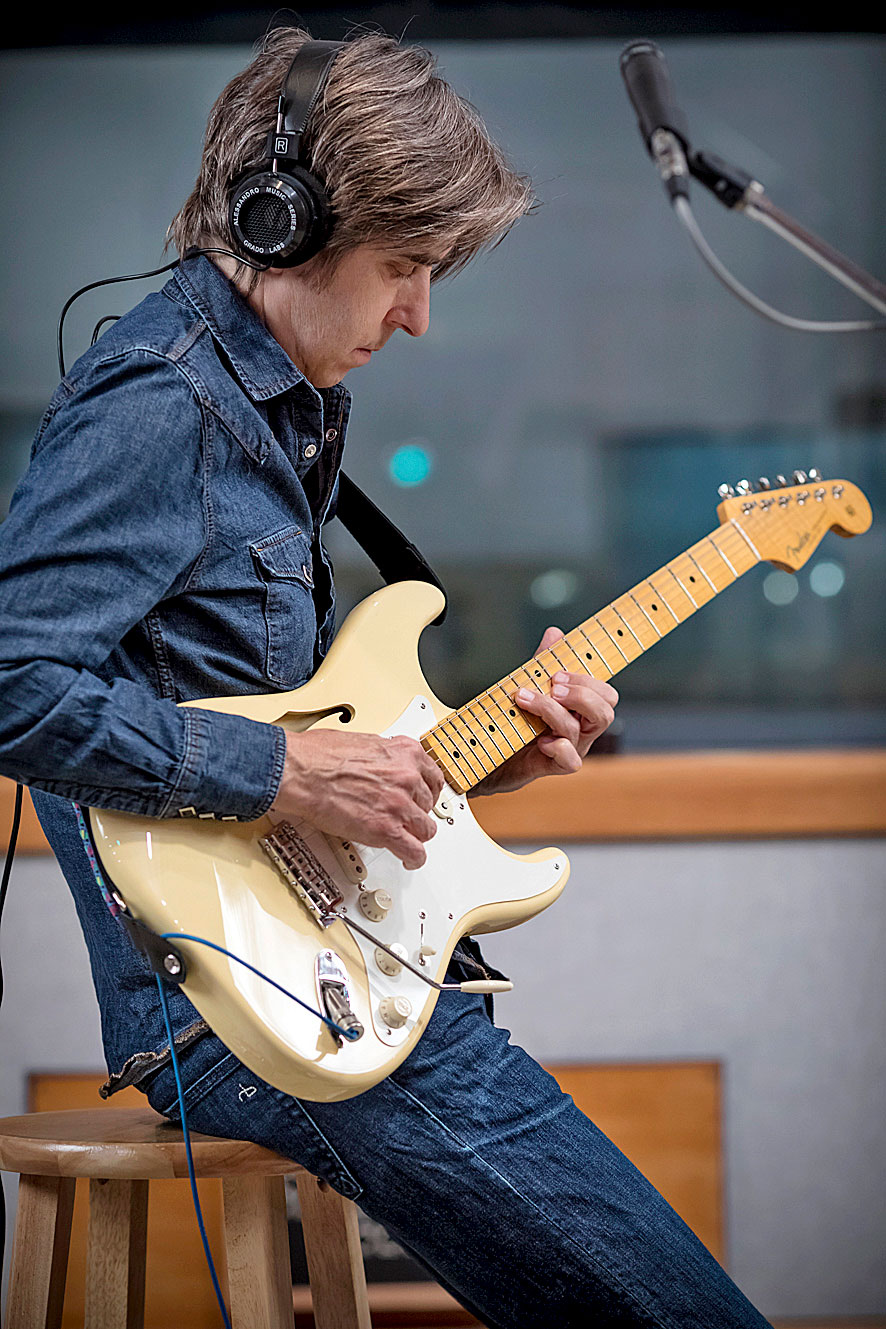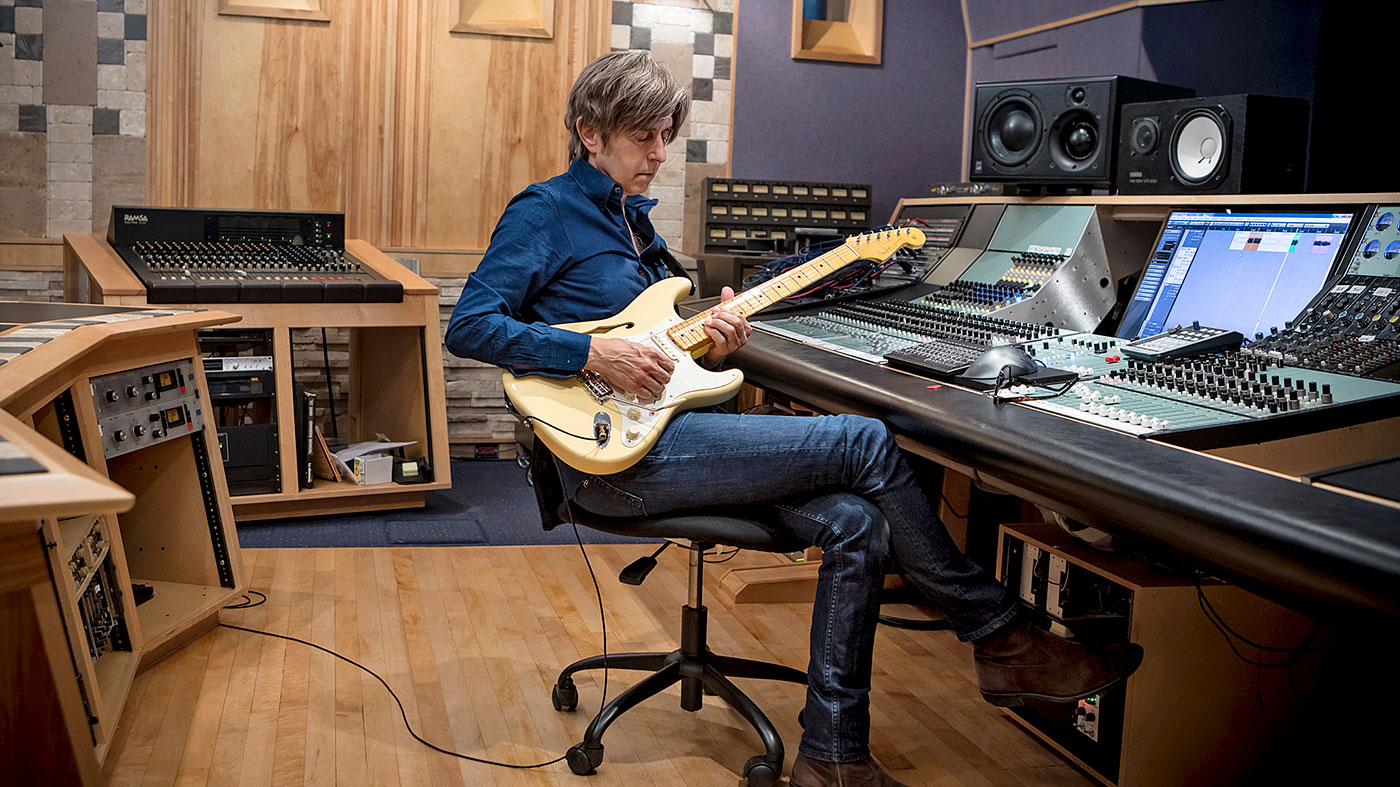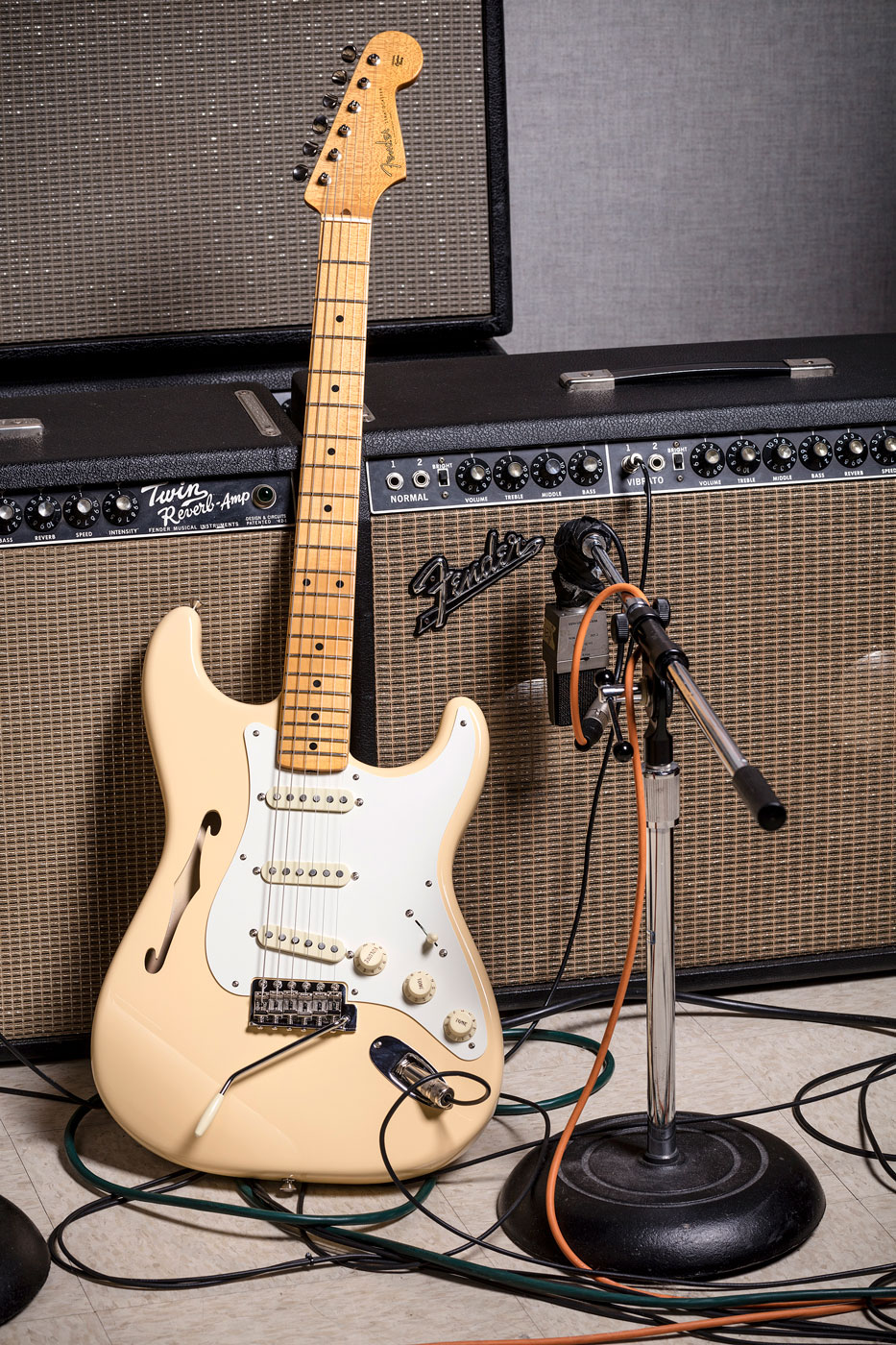Eric Johnson: “I’ve seen YouTube videos of myself where I’m going on and on and on with lead solos, and it’s like: 'Okay, wrap it up!'”
The virtuoso and tone guru on his evolving approach to his guitar sound, pedals and playing

In 1990 Eric Johnson redefined instrumental electric guitar with his watershed album Ah Via Musicom. Now, three decades on, he’s once again touring that seminal work. We caught up with him to find out what he’s concluded about technique and tone in the meantime...
Eric Johnson seems to be enjoying a bit of a musical renaissance. He’s exploring new sonic avenues with a new signature Thinline Stratocaster even as he once again tours the album that really ‘broke’ him as a major force in guitar, Ah Via Musicom, released in 1990.
But well before that, he’d upset the applecart of the American session world with his precise yet progressive, melodic guitar work that stood in contrast to the urbane stylings of Larry Carlton and other giants of that scene. His solo on Minstrel Gigolo by Christopher Cross in 1979, for example, is a little jewel - whose geometrically perfect construction still glitters with invention.
Virtuosic yet deeply melodic and widely imitated, Johnson went on to introduce an abundance of distinctive licks to the lexicon of electric guitar
Virtuosic yet deeply melodic and widely imitated, Johnson went on to introduce an abundance of distinctive licks to the lexicon of electric guitar and became famous - arguably infamous - for his exacting approach to tone, his playing representing a new frontier in instrumental melodic and blues guitar technique.
Three decades and 10 albums on, Johnson cuts a more a mellow, thoughtful figure than that earlier reputation might suggest.
His recent work, including last year’s Collage long-player, has seen him weave jazz deeper into his work and revealed him as a fine fingerstyle acoustic player who seems to be discovering yet more about the possibilities of the instrument as the years pass, rather than subside into musical complacency.
We joined Eric to see where the state of his art is at 28 years on from Ah Via Musicom and discover what he’s learned about tone on his pilgrimage toward sonic nirvana...
Get the MusicRadar Newsletter
Want all the hottest music and gear news, reviews, deals, features and more, direct to your inbox? Sign up here.

Fingerstyle to Farka Toure
You play acoustic beautifully on your latest album, Collage. Do you find playing unplugged liberating, given that your electric style is so well defined and pretty widely imitated?
“Yes, definitely. When I play acoustic, I think of it more as a multi-voiced instrument that I have to carry the song. Most times when I play electric, it’s more ensemble. So the acoustic, I feel, to make the work the way I want to, I like to play a finger-picking style with more rhythm and melody going on at the same time. So, from that point, it can be more demanding.”
Do you ever like to play electric fingerstyle?
I love the fact that Jeff doesn’t use a pick, because it’s amazing. I sometimes wish that he would, 15 per cent of the time
“Yes and in fact it’s interesting because when I just play with my fingers, I think, ‘Well, that sounds great.’ I mean, you have great players like Jeff Beck, and Derek Trucks... I don’t think he uses a pick. There are a lot of people that don’t use them: Wes Montgomery, you know? Even at high volumes, I think it’s interesting.
“There’s a certain thing a pick does which is why I still enjoy using it, but I love the fact that Jeff doesn’t use a pick, because it’s amazing. I sometimes wish that he would, 15 per cent of the time, use a pick - because there’s a certain thing he does with a pick that’s great, too. But I can see why somebody would devote themselves to a certain way to do things, because it takes so much time and dedication to get it together.
“I think within that context, there’s really no, ‘Oh, well, this is the way to do it,’ or, ‘That’s the way’. There are so many different ways, and they’re all good. They all produce a different thing, but I do like fingers on electric. I actually use pick and finger, a hybrid kind of thing on electric.”
You cover The Beatles’ We Can Work It Out in a really interesting way on the album - the shifting rhythmic patterns almost remind us of West African guitarists such as Ali Farka Toure...
“Yes, well, I think I’m trying to learn to put more emphasis on different beat patterns with rhythm, and that’s what I was trying to do on that song. Instead of just playing on the one, and just playing chords... You know, if you have other stuff going on in the sound, it can be a very interesting counterpoint.
“Hendrix was great at that. I’ve always loved Axis: Bold As Love, because you listen to that record and you realise that he wasn’t so much thinking about ‘How much lead can I put on this record?’ He was thinking about ‘How much rhythm?’ I mean, it’s, like, 80 per cent rhythm and it just has these little tiny bits that are lead, but it was amazing rhythm stuff that he did, and especially for the time. It was something never really done in rock music, at least.”

Trade in your sports guitar
Do you think guitar music has recalibrated a bit towards serving the song rather than envelope-pushing technique?
“Well, I think it [technical guitar] took its natural course and people got fed up with that. It became some kind of ‘sports’ thing, and as soon as you do that, it’s just a matter of time before it’s going to burn out. People get fed up with it, because it really devalued it to be this gratuitous thing.
Originally, when the explosion of great guitarists happened, I think there was more of an adherence to serving the song
“I just think it’s progressing in a different way now. I think the approach to guitar is more to serve the music now. Somebody would have to totally reinvent the way we approach the guitar as a lead instrument to really turn people’s heads these days, because they’ve heard the same licks over and over for 60 years.
“Originally, when the explosion of great guitarists happened, I think there was more of an adherence to serving the song. If you listen to Paul Kossoff in Free, or Jeff Beck with Rod Stewart, or Hendrix, definitely there was this amazing musicality, but it was infused into this overview of just great music.
“I’ve seen YouTube videos of myself where I’m going on and on and on with lead solos, and it’s like: ‘Okay, wrap it up! That was interesting for a minute,’ but it’s, like, over and over and over... and I’m trying to look at that now. If you’re going to do that, it should be musical and melodic and take you on a journey, and maybe have something unique about it.
“I think there’s still room for it. But I also think there’s an opportunity now for us as guitarists to look at where we can be brave enough to be unique or try something different, or colourfully enhance something and make it a kind of departure.”

Tone zone
You’re famously meticulous with regard to tone. What’s your rig like at the moment?
“Well, right now, we’re doing a retrospective tour of Ah Via Musicom. It’s a really fun tour. It’s interesting: when I decided to do this tour and I started rehearsing for it I had to go back. I wanted to really play the music note for note - but I was noticing I was having a little trouble getting the sound.
“So I started listening to some of the sounds I was getting now, compared to 25 years ago, and I noticed there was a certain harmonic thing [missing]. I would start to listen and go, ‘Wow, I had this incredible amount of gain and it has a sort of a ferocity to it that maybe I need to reintroduce into what I’m doing in the present.’ So, I ended up going back to a lot of the gear I used back then.
I just use the same thing I’ve always used, the old Twin Reverbs and the old Plexi Marshalls
“So, right now, I’m using a lot of older gear that I used back then, and it’s brought back some of the aspects of the sound I had back in that period that I’m really glad to get back, so I’m trying to do a hybrid of whatever I’m trying to do now, plus some of the aspects of that I did before.
“So, what’s on my pedal board now is a Tube Screamer going into the Fuzz Face, and I’m using some old digital delay stuff and Echoplexes. Just stuff that I quit using because it was so old and cantankerous - but it’s got a great sound so I’m back to using it. I kind of went back to the 1800s, I think!”
How about amps?
“Well, I just use the same thing I’ve always used, the old Twin Reverbs and the old Plexi Marshalls. The dirty rhythm thing has, kind of, been floating different amps for many years, but right now, I’m using this Two-Rock amp. It’s called a Classic Reverb and it’s a very nice amplifier.”
There’s quite a trend now for amps with serious clean headroom that are intended to have drive pedals in front of them - do you like that approach?
“Yes, definitely. I mean, if I had one amp I had to use and that was it, it would have to be the Twin Reverb. The whole concept of a solo sound that I like to get, and the rhythm sound I like to get... they’re diametrically opposed to each other. So I’ve always had to use two amps.
“The way a Marshall is designed is more like a Tweed amp, in terms of where they put the tone stack and the preamp. It’s a totally different approach than, say, the 60s Blackface thing, which is more of a [high] headroom sound.
“They’re both viable, because I wanted to be able to get that The Wind Cries Mary tone, but then I also wanted to get the Wheels Of Fire Cream tone and I never was able to reconcile how I could do it out of one amplifier. I tried doing it with pedals in front of the Twin, and I guess you could do that. But it ended up so that I needed to use both amps, because you also set the knobs different.
“If I’m doing a lead thing through a Marshall, I’m going to run the volume way up, and the tone way down. But then if I’m going to do a clean thing on a Fender, I’m going to run the volume down, and the tone is way up. It’s a different approach.”

See the sound
Do you have any advice on getting the most, tonally, from pedalboards?
“I think the first thing is to just visualise sonically in your head exactly what sound you’re going for. The more you can define the sound you’re going for, the more you can make it happen. If your concept is blurry in your head, then your sound is going to be blurry on the outside. It’s just going to reflect. But if you really crystallise exactly what you’re going for, then you know when you don’t have it or when you do. And so, you keep experimenting and you go, ‘Oh, that’s not it.’
What’s most important to me is whether the pedal destroys my direct tone. Because at that point it’s useless to me
“If I’m using pedals, obviously I want to use something that I like the way it works. You know, a chorus pedal that sounds good, or an echo or an overdrive. Just simple things that I like.
“Where somebody can get in trouble is that there are so many pedals and a lot of them do all these neat things. But, to me, what’s even more important is what does it do to your direct tone? Some pedals have this awesome effected sound, but they compromise your direct tone. Unless you use a wet/dry rig... but that has its own problems, too.

“So, in fact, I don’t use a wet/dry rig. What’s most important to me, though, is whether the pedal destroys my direct tone. Because at that point, I don’t care how great the effect is, it’s useless to me - because I’ve lost the natural beauty of the guitar tone.
“Everything changes everything. You have to find the colouration you can live with, and a lot of times, you can find colouration that enhances. It takes you somewhere else, so you can, kind of, surf that wave to your own flavour. You find pedals that you like the way the effect sounds - but you also pay strong attention to whether it preserves or enhances the direct tone in a way that you can live with or be pleased by.”
What was it like to revisit Ah Via Musicom? Did you feel a strong sense of contrast between the player you were back then and how you are now?
“Yes. I’ve been playing certain songs off the record for all these years, but I’ve never played them start to finish. I definitely looked at some stuff that I played, and the type of pickups I used, or the type of effects I used, and it promoted a certain sound that afforded me the ability to go certain ways. As we define the gear we use, it has certain corridors of abilities or limitations, and so I refound some abilities that it’s been very medicinal for me to look at. It’s been really good.”

Jamie Dickson is Editor-in-Chief of Guitarist magazine, Britain's best-selling and longest-running monthly for guitar players. He started his career at the Daily Telegraph in London, where his first assignment was interviewing blue-eyed soul legend Robert Palmer, going on to become a full-time author on music, writing for benchmark references such as 1001 Albums You Must Hear Before You Die and Dorling Kindersley's How To Play Guitar Step By Step. He joined Guitarist in 2011 and since then it has been his privilege to interview everyone from B.B. King to St. Vincent for Guitarist's readers, while sharing insights into scores of historic guitars, from Rory Gallagher's '61 Strat to the first Martin D-28 ever made.
“A pedal that sings with harmonic richness and blooming touch response”: Tone King offers up boutique tube amp tones for your pedalboard with the Imperial Preamp
“Each and every unit is perfectly dialled in to the 'sweet spot' that can be so elusive to find in vintage pedals”: Pigtronix’s Gas Giant is a high-gain fuzz pedal with a FET-driven onboard noise gate












